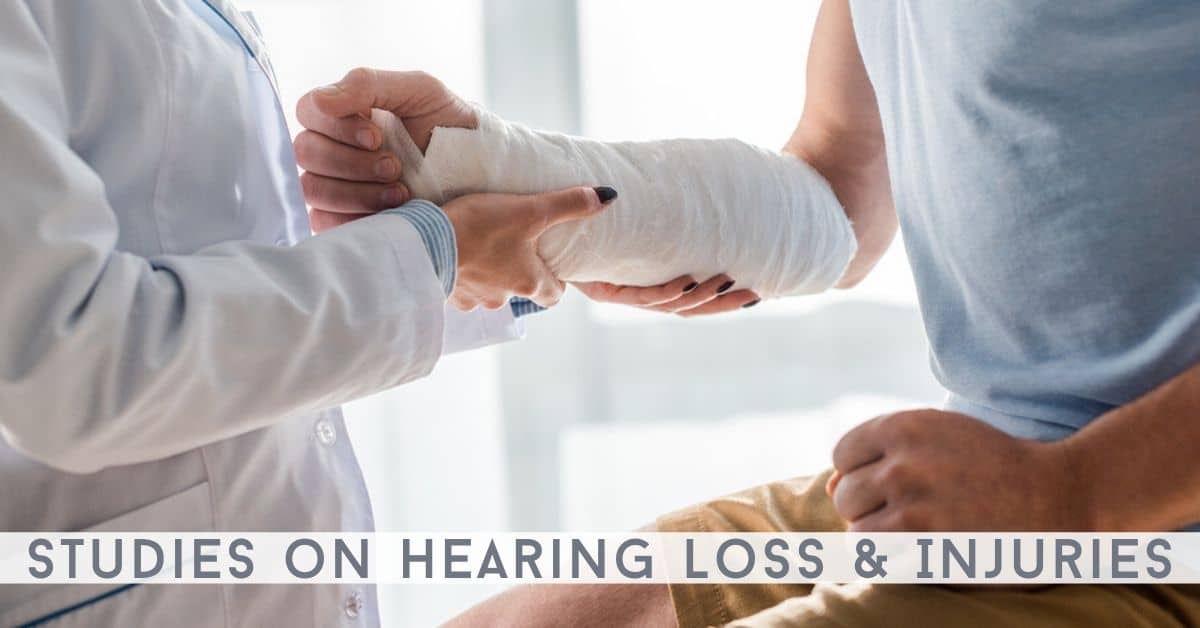Accidental injuries are more common than we may think. According to the Centers for Disease Control and Prevention, unintentional injuries accounted for nearly 40 million visits to a doctor’s office and about 30 million emergency room visits in 2017. Additionally, accidental injury was the third cause of death in the same year. Substantial research has been conducted to identify the factors that increase the risk of unintentional injuries. These factors include chronic health conditions and impaired senses. Hearing loss is one of the most common sensory impairments, impacting nearly 30 million people in the U.S. alone. The relationship between hearing loss and accidental injuries has been studied for decades. Overall, research indicates that hearing loss does increase the risk of unintentional injuries. Let’s dive into a few!
- 2018 study published in: JAMA Otolaryngology-Head & Neck Surgery
- Study: in this observational study, researchers analyzed data collected on the National Health Interview Survey. From 2007 to 2015, 272,000 people responded to questions related to their hearing and injury. Participants self-reported their hearing status (excellent, good, a little trouble, moderate trouble, a lot of trouble, and deaf) and accidental injury over the past three months. They then took these results and calculated for a population of 232.2 million people.
- Findings:
- 6.6 million people experienced accidental injuries annually between 2007 and 2015.
- As the degree of self-reported hearing impairment increased, so did the risk of accidental injuries.
- A little trouble hearing: 60% more likely
- Moderate trouble hearing: 70% more likely
- A lot of trouble hearing: 90% more likely
- People who reported their hearing difficulty as “a lot of trouble” were twice as likely to have experienced an unintentional injury
- Conclusions: one of the researchers of this study, Dr. Neil Bhattacharyya, a researcher at Harvard Medical School and Brigham and Women’s Hospital in Boston stated to Reuters that:
- “Hearing is a special sense and as such, one of its prime sensory functions is as a warning system for the body. When people have hearing loss, they may be less likely to hear warning signs of, for example, a bicycle or motorcycle coming towards them. They may be less likely to hear a car horn or someone yelling at them to ‘duck’ if a baseball is headed their direction”
- 2007 study published in the Annals of Family Medicine
- Study: focuses specifically on children (aged 1 to 18) with hearing loss and increased risk of injury. Researchers compared rates of emergency room visits (or medical treatment) for accidental injuries for children with and without diagnosed hearing loss. This data was compiled using Medicaid billing information from 2002-2003 in the state of South Carolina.
- Findings: comparing data for the two groups, researchers found:
- Children with hearing loss were more than twice as likely to have experienced injury
- Children with hearing loss: about 17.7% experienced injury
- Children without hearing loss: about 8.6% experienced injury
- Conclusions: explaining the findings that show that children with hearing loss are at higher risk of accidental injury, researchers in this study stated:
- “The most straightforward explanation may be reduced ability to recognize danger clues. In addition to difficulty hearing the noise associated with hazards (e.g., motorized vehicles, footsteps), children with hearing loss also may have difficulty hearing a parent’s warning of impending danger”.
Preventing Injuries
It is clear from the research shared above that there is an increased risk for accidental injuries among people with hearing loss. The most important way people with any degree of impaired hearing can prevent unintentional injuries is by having your hearing assessed. Scheduling an appointment with a hearing healthcare specialist is a simple step one can take today to be proactive about hearing health. A hearing test determines any degree of impairment, the specific type, and most effective treatment options.
Hearing loss is highly treatable, the most common treatment is hearing aids. These small electronic devices help absorb, amplify, and process sound which helps people hear much better. Similar to most electronic devices, hearing aids have experienced significant innovation and are now available in a variety of options that feature various technologies that enhance the listening experience. The increased ability to hear can prevent accidental injuries, strengthen communication, and improve overall quality of life!

